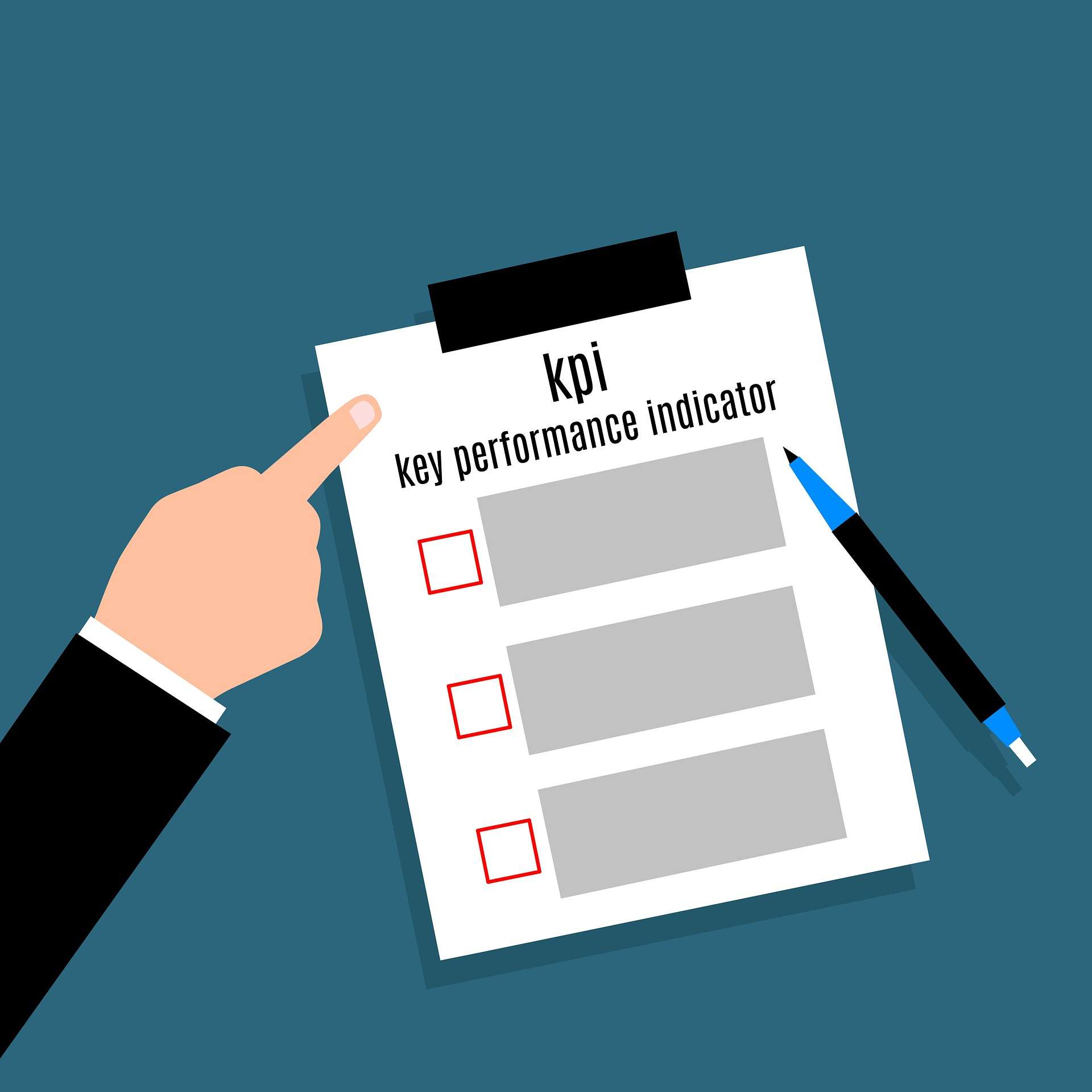I. Introduction
In today’s fast-paced and highly competitive business landscape, performance measurement has become a critical aspect of organizational success. It allows businesses to evaluate their progress, track key metrics, and ensure alignment with strategic objectives. At the heart of effective performance measurement lies the concept of Key Performance Indicators (KPIs), which serve as valuable benchmarks to gauge performance outcomes. This article aims to explore the fundamental principles and best practices surrounding performance measurement and KPIs, providing readers with a comprehensive understanding of how these elements contribute to unlocking success.
II. Performance Measurement Fundamentals
A. The Basics of Performance Measurement
Performance measurement involves the process of quantifying and assessing various aspects of organizational performance, such as financial, customer satisfaction, internal processes, and employee engagement. By establishing metrics and targets, businesses can evaluate their performance against set goals.
B. Exploring the Benefits of Effective Performance Measurement Systems
Implementing a well-designed performance measurement system brings several advantages to organizations. It provides valuable insights into strengths and weaknesses, facilitates informed decision-making, enhances transparency, drives accountability, and enables continuous improvement.
C. Common Challenges and Pitfalls in Performance Measurement
Despite the benefits, organizations often face challenges when implementing performance measurement systems. Common pitfalls include insufficient data quality, lack of alignment with strategic objectives, subjective measurement criteria, and difficulties in translating data into actionable insights.
III. Choosing the Right KPIs
A. Identifying Organizational Objectives
Before choosing KPIs, it is crucial to identify and define the organization’s strategic objectives. By understanding what the organization aims to achieve, the selection of relevant and purposeful KPIs becomes more effective.
B. Aligning KPIs with Strategic Goals
To ensure effective performance measurement, KPIs should align with the organization’s strategic goals. This alignment ensures that KPIs are directly linked to the desired outcomes and priorities of the organization.
C. Differentiating Lagging and Leading Indicators
KPIs can be categorized as either lagging or leading indicators. Lagging indicators reflect past performance, while leading indicators provide insights into future performance trends. By utilizing both types of indicators, organizations can gain a comprehensive understanding of their performance.
D. Considering Industry-Specific Factors
Different industries have unique characteristics and requirements. When selecting KPIs, organizations must consider industry-specific factors that influence performance outcomes. This ensures that the chosen KPIs are relevant and tailored to the specific needs of the industry.
IV. Types of Key Performance Indicators (KPIs)
A. Financial KPIs
Financial KPIs provide insights into the organization’s financial health, growth, and profitability. These KPIs include metrics such as revenue growth, profitability ratios, cost management efficiency, return on investment (ROI), and shareholder value metrics.
B. Customer KPIs
Customer KPIs focus on measuring customer satisfaction, loyalty, and the organization’s ability to meet customer expectations. Metrics such as customer satisfaction scores, Net Promoter Score (NPS), customer retention rates, and customer lifetime value (CLV) provide valuable insights into customer-related performance.
C. Internal Process KPIs
Internal process KPIs measure the efficiency and effectiveness of business operations and processes. Examples include quality and defect metrics, operational efficiency ratios, process cycle time, and waste reduction metrics. These KPIs help organizations identify areas for improvement and optimize internal processes.
D. Employee KPIs
Employee KPIs assess the satisfaction, engagement, and productivity of the organization’s workforce. These metrics include employee satisfaction scores, engagement levels, training and development metrics, and employee productivity and performance indicators. Monitoring these KPIs ensures a motivated and high-performing workforce.
V. Designing Effective KPIs
A. SMART Criteria for KPIs
When designing KPIs, it is essential to follow the SMART criteria:
Specific: KPIs should be well-defined and focused on a specific outcome.
Measurable: KPIs should be quantifiable and allow for objective measurement.
Achievable: KPIs should be realistic and attainable within the organization’s capabilities.
Relevant: KPIs should be directly linked to the organization’s strategic objectives.
Time-bound: KPIs should have a defined timeline or frequency for measurement to track progress effectively.
B. Cascading KPIs Throughout the Organization
To ensure alignment and accountability, KPIs should cascade throughout the organization, from top-level strategic objectives to individual performance goals. This alignment ensures that everyone within the organization is working towards common goals.
C. Establishing Baseline Measurements and Targets
Before implementation, organizations should establish baseline measurements and set realistic targets for KPIs. This allows them to track progress effectively and determine the success and effectiveness of performance initiatives.
D. Continuous Evaluation and Refinement of KPIs
Organizations must continuously evaluate and refine their KPIs to ensure relevance and effectiveness. Regularly reviewing KPIs enables organizations to adapt to changing circumstances, refine measurement criteria, and identify emerging trends.

VI. Implementing Performance Measurement Systems
A. Introduction to Performance Management Systems
Performance management systems provide frameworks and tools to support performance measurement efforts. They integrate various elements, such as goal-setting, performance tracking, and performance appraisal, to drive organizational success.
B. Selecting Suitable Performance Measurement Tools
When implementing a performance measurement system, organizations must select suitable tools that align with their needs and objectives. Tools can include software platforms, data collection methods, and analytical tools to facilitate data-driven decision-making.
C. Utilizing Technology for Data Collection and Analysis
Leveraging technology is crucial for efficient data collection and analysis. Automation tools and data management systems can streamline data collection processes, increase accuracy, and facilitate timely analysis.
D. Integrating Performance Measurement into Decision-Making Processes
Performance measurement should be integrated into decision-making processes to ensure that data-driven insights are utilized effectively. This integration empowers organizations to make informed decisions based on performance outcomes and trends.
VII. Ensuring Data Accuracy and Reliability
A. Collecting and Validating Data
Organizations must establish robust data collection processes to ensure accuracy and reliability. Data validation techniques, such as cross-referencing sources, statistical analysis, and data cleansing, help identify and rectify any discrepancies.
B. Addressing Data Gaps and Inconsistencies
Addressing data gaps and inconsistencies is crucial for reliable performance measurement. Organizations should establish protocols to address data gaps proactively and implement checks to verify data consistency.
C. Ensuring Data Security and Privacy
Protecting data integrity, security, and privacy is essential when implementing performance measurement systems. Secure data storage, access controls, and compliance with data protection regulations are critical to maintaining trust and credibility.
VIII. Communicating KPIs and Performance Results
A. Choosing Appropriate Visualization Methods
Choosing the right visualization methods is essential for effectively communicating KPIs and performance results. Whether through charts, graphs, or visual dashboards, using visual aids enhances comprehension and engagement.
B. Developing KPI Dashboards and Scorecards
KPI dashboards and scorecards provide a consolidated view of performance metrics, making it easier for stakeholders to monitor progress and identify areas that require attention. Interactive dashboards with drill-down capabilities allow for detailed analysis and swift decision-making.
C. The Role of Clear and Concise Reporting
Clear and concise reporting is critical for communicating KPIs and performance results to various stakeholders. Reports should provide relevant information, present data in a digestible manner, and highlight key insights and trends.
D. Engaging Stakeholders Through Effective Communication
Effective communication is vital for engaging stakeholders in performance measurement efforts. Sharing performance outcomes, celebrating achievements, and soliciting feedback fosters involvement and strengthens a culture of performance excellence.
IX. Performance Measurement and Organizational Culture
A. Fostering a Culture of Performance Excellence
Performance measurement plays a crucial role in fostering a culture of performance excellence. Organizations should emphasize the importance of performance management, encourage a growth mindset, and recognize and reward high performance.
B. The Link Between Performance Measurement and Employee Motivation
Performance measurement directly influences employee motivation. By setting clear goals, providing feedback, and recognizing achievements, organizations can enhance employee engagement, productivity, and job satisfaction.
C. Accountability and Transparency in Performance Reporting
Performance reporting should be characterized by accountability and transparency. Organizations should ensure that performance results are accessible to relevant stakeholders, encouraging responsibility and facilitating informed decision-making.
X. Performance Measurement and Continuous Improvement
A. Using Performance Data to Drive Continuous Improvement
Performance data serves as a valuable resource for driving continuous improvement. Regular analysis of performance outcomes allows organizations to identify trends, evaluate effectiveness, and implement necessary changes to optimize performance.
B. Identifying Trends and Areas for Optimization
By analyzing performance data, organizations can identify trends and patterns that shed light on areas for optimization. These insights drive targeted improvement efforts, ensuring that resources are allocated effectively to areas with the greatest potential for growth.
C. Incorporating Feedback Loops for Adaptive Performance Management
Incorporating feedback loops into performance measurement systems enables adaptive performance management. Timely feedback, regular evaluation, and iterative adjustments allow organizations to respond to changing circumstances and optimize performance strategies.
XI. Summary and Key Takeaways
A. Recap of the Importance of Performance Measurement
Performance measurement is critical for organizations striving towards success. It provides insights into strengths, weaknesses, and areas for improvement. By effectively measuring performance, organizations can make data-driven decisions, monitor progress, and continually enhance their strategies.
B. Key Considerations When Selecting and Designing KPIs
When selecting and designing KPIs, organizations should consider their alignment with strategic goals, industry-specific factors, and adherence to SMART criteria. Cascade KPIs throughout the organization, establish targets, and continuously evaluate their relevance and effectiveness.
C. Implementation Best Practices for Effective Performance Measurement
Implementing effective performance measurement systems requires thoughtful planning, suitable tools, robust data collection processes, and clear communication methods. Data accuracy, integration with decision-making processes, and a performance-focused organizational culture are key to success.
XII. Frequently Asked Questions (FAQs)
A. What are the Common Challenges in Performance Measurement?
Common challenges in performance measurement include data quality issues, alignment with strategic goals, subjective measurement criteria, and difficulties in translating data into actionable insights.
B. How Many KPIs Should an Organization Have?
The number of KPIs an organization should have varies depending on its size, industry, and strategic objectives. Generally, it is recommended to focus on a limited number of meaningful and relevant KPIs to avoid information overload.
C. What Actions Should be Taken When KPIs are Not Meeting Targets?
When KPIs are not meeting targets, organizations should assess the root causes, identify areas for improvement, and adjust their strategies accordingly. This may involve process optimization, resource reallocation, or revisiting the validity of the selected KPIs.
D. How Can KPIs be Communicated Effectively to Employees?
Employees should be provided with clear and concise information about KPIs. This includes explaining the purpose, relevance, and expected outcomes of the KPIs. Engaging employees through regular communication, visual aids, and opportunities for feedback promotes their understanding and buy-in.
E. What Role Does Benchmarking Play in Performance Measurement?
Benchmarking compares an organization’s performance against industry standards or best practices. It helps identify performance gaps, highlights areas for improvement, and provides a reference point for setting performance targets and goals. Benchmarking supports data-driven decision-making and continuous improvement efforts.
In conclusion, effective performance measurement and KPIs are essential elements in unlocking success for organizations. By understanding the fundamentals, selecting the right KPIs, designing an effective measurement system, and fostering a performance-oriented culture, organizations can strategically drive continuous improvement and achieve their goals.



